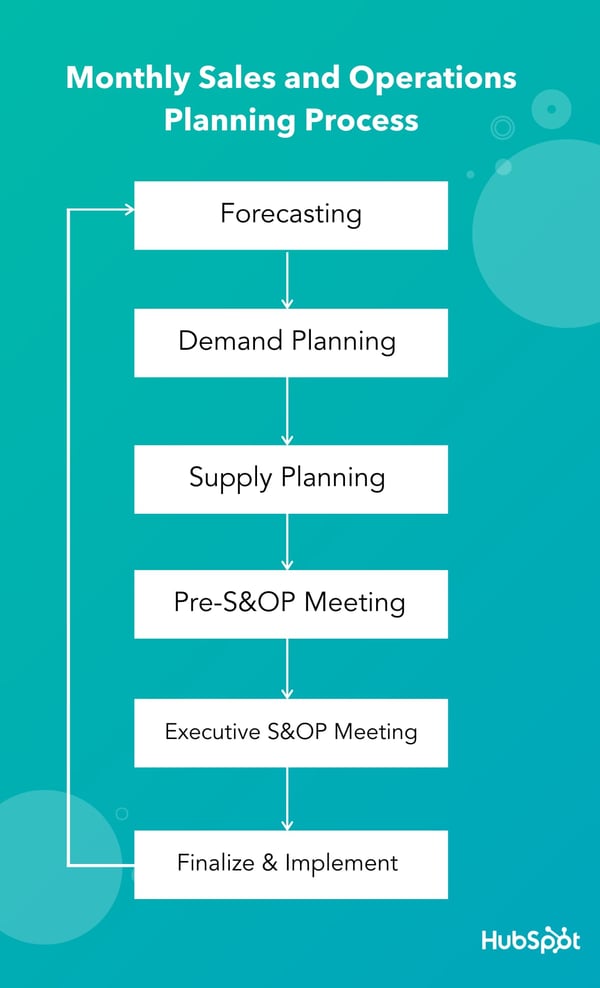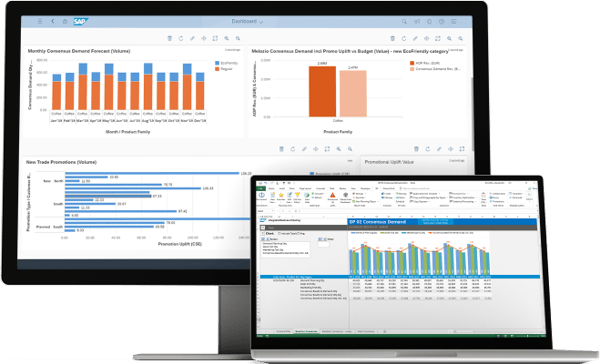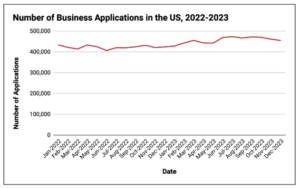Henry Ford, business magnate and founder of the Ford Motor Company, once said, “Quality means doing it right when no one is looking.”
If you want to create a quality product and provide an outstanding customer experience, your business processes should be fine-tuned so every step — from manufacturing to delivery — is well-executed.
Processes can be made for just about anything. And the sales and operations planning (S&OP) process is crucial to any successful business.
Let’s demystify sales and operations planning (S&OP) and learn more about the S&OP process.
So, what’s the purpose of S&OP? To coordinate across business units, increase transparency, balance supply and demand, and to achieve profitability. S&OP can occur on a monthly, yearly, or even two or three-year basis, depending on the company and its goals.
Here are some key benefits to sales and operations planning (S&OP):
- Increased transparency between departments
- Informed decision making about a product’s demand and supply
- Improved inventory management
- Better sales and budget forecasting
- A clear understanding of a product’s lifecycle and its management
- Streamlined processes that improve the overall customer experience
The S&OP process includes forecasting, demand and supply planning, and executive review. The goal is to coordinate sales and operations planning across business functions so they’re all on the same page. The exact steps can vary depending on the company, its products, and its industry.
1. Forecasting
At this stage of the S&OP process, data is gathered about prior sales and forecasts are made for future sales. It’s important to consider any internal and external factors that can impact sales (e.g., industry, customers, competition). Any trends will be identified and analyzed.
2. Demand planning
Demand planning is when cross-functional collaboration comes into play. The forecasts are analyzed, and adjustments are made to inventory and customer service policies based on the product demand and sources of demand. The demand can be measured in either revenue or units of a product.
3. Supply planning
During supply planning, representatives from finance, operations, and materials to evaluate capacity. They’ll determine if there are any constraints on people, machinery, and suppliers. From there, a supply plan is created that will account for any capacity constraints.
4. Pre-S&OP meeting
During this stage of the S&OP process, leaders from finance, sales, marketing, operations, materials, product management, and human resources meet to collaborate. They’ll compare the forecasts to the demand and supply plans, and they’ll consider the financial impact of the plans.
5. Executive S&OP meeting
In this stage, executives meet to analyze all the forecasts, plans, and recommendations from the pre-S&OP meeting. By the end of the executive S&OP meeting, a final sales and operations plan will be approved.
6. Finalize and implement
Once the sales and operations plan has been approved, it is time for implementation. After implementation, the S&OP should be evaluated on a regular basis to ensure success.
Here’s a visual overview of what the S&OP process looks like.
Sales and Operations Planning Process

S&OP Metrics
When evaluating your S&OP process, there are some key metrics you can use to gauge performance.
Demand and Supply S&OP Metrics
Demand and supply metrics will help you determine if your forecasts are accurate and the demand matches the supply.
- Demand forecast versus actual
- Production forecast versus actual
- Inventory turnover
- Capacity utilization
- On-time delivery
- Accuracy in order delivery
- Cycle times
Financial S&OP Metrics
These metrics show you how the business is performing from a financial perspective.
- Total sales in a period (e.g., month, quarter, year)
- Total sales versus forecast
- Gross margin
- Working capital versus plan
S&OP Software
Which tools should you use for your sales and operations planning? Instead of solely relying on spreadsheets, here are some software options you can use to streamline your S&OP.
1. Oracle S&OP Cloud

Pricing: Contact for Pricing
Oracle provides process templates you can use to make your sales and operations planning run smoother. You can monitor each stage of the process and dashboards allow you to see KPI summary graphics. It allows you to collaborate with colleagues and assign tasks. Plus, it integrates with Excel.
Best for Larger Scale Businesses
Oracle S&OP Cloud is tailored primarily towards larger businesses. It includes features that suit the needs of enterprise-level customers, including social collaboration resources, accommodations for organizations with several users, and aggregate planning capabilities for long-term strategic planning decisions.
2. SAP Integrated Business Planning

Pricing: Contact for Pricing
The SAP Integrated Business Planning software makes your S&OP planning quick and agile. Key features include scenario planning, simulations, and advanced analytics so you can stay on top of forecasts and hit your financial targets.
Best for a Multifaceted Solution, Extending Beyond S&OP for Supply Chain Planning
SAP Integrated Business Planning contains resources that allow for effective sales and operations planning, but the solution’s capabilities extend well beyond the practice. It combines S&OP, forecasting and demand, response and supply, demand-driven replenishment, and inventory planning to ensure business continuity through supply chain disruption.
3. Infor Sales and Operations Planning
Pricing: Contact for Pricing
With the Infor Sales and Operations Planning software, you can synchronize demand and supply imbalances, coordinate across business units, and analyze performance. It even includes predictive financial analysis so you can see how business decisions will impact the bottom line
Best for Businesses Looking for an Accessible Interface
Infor S&OP’s user interface’s ease of use is one of the software’s biggest draws. You don’t need to be an IT specialist to leverage it — allowing users closer to your sales and operations planning to manage and keep tabs on the process.
If you’re interested in a straightforward solution that keeps things simple without sacrificing functionality, look into Infor’s sales and operations planning resources.
4. Vanguard IBP S&OP by Wolters Kluwer
Pricing: Contact for Pricing
Vanguard Predictive Planning is an excellent resource for any organization trying to support its S&OP infrastructure with an AI-based, end-to-end impact analysis solution.
Vanguard can provide your business with a comprehensive overview of your sales, demand, supply, and production to inform accurate, constraint-based plans — among a wide array of other features and benefits.
Best for Businesses Interested in a Collaborative Solution
One aspect of Vanguard IBP S&OP is its resources for collaboration across all facets of your sales and operations planning. The platform includes business intelligence software that enables end-users to create their own charts, reports, and dashboards.
It also offers automated, easily adjustable workflows, easily visible scenario modeling, cross-department insights, and other features that foster collaboration between sales, operations, and finance.
5. Kinaxis Rapid Response S&OP
Pricing: Contact for Pricing
Kinaxis Rapid Response S&OP is a sales and operations planning solution that can help you improve business outcomes, take more centralized control of your S&OP, reduce costs in supply chain planning, foster collaboration, and generally increase efficiency throughout the S&OP process.
Best for Businesses Looking for Solid Out-of-the-Box Features
While Kinaxis Rapid Response S&OP does feature some degree of customization, it differentiates itself from the competition with its standard features.
Its out-of-the-box dashboards can help you accurately gauge performance immediately — with features accounting for revenue value, ending inventory value, margin percentage, and other key S&OP performance indicators.
Sales and Operations Planning Best Practices
1. Have executive ownership of your S&OP.
Successful sales and operations planning takes a certain degree of guidance and direction. With S&OP, you’re essentially trying to facilitate cohesion between conflicting elements of your business — that’s not a responsibility that can be vaguely managed without clearly defined and engaged leadership.
The practice requires firm and active executive ownership — typically from someone like a CEO or general manager. There’s bound to be some kind of tension between the supply and demand sides of your organization, so you need a central figure ensuring that there are definitive, understood, and consistently enforced standards for how both parties will work with one another.
2. Keep things simple.
Companies conducting S&OP have tend to trip themselves up by overcomplicating the process — most notably when it comes to metrics. If you try to keep tabs on too many factors between the supply and demand sides of your business, your planning might wind up being inefficient, and the visibility you’re trying to maintain between departments could be clouded.
Instead of trying to measure everything you can think of, determine the most meaningful, relevant metrics for gauging how both sides of your business are working together — whether that be measurements of how forecasts are stacking up to actual sales figures, inventory turnover, or any particularly pertinent indicators of how sales and operations are interacting.
Try to keep the number of metrics you’re tracking between 10 and 15 — make those choices count, and don’t let this side of the process get away from you.
3. Maintain records.
Successful sales and operations planning is an ongoing process. It leans, in large part, on your ability to learn from your previous hitches and hiccups. That’s why you need to keep detailed records of your previous plans and processes. Document most — if not all — aspects of your S&OP efforts. Those reference points can be central to your planning’s sustained success.
4. Stress Cross-Functional Engagement
Cross-organizational collaboration is at the core of any and all sales and operations planning. Stakeholders from every impacted facet of the business need to be included and involved in the process.
Your sales and operations planning won’t be particularly helpful or productive if you’re only considering your sales org’s contributions and interests while ignoring other departments like operations and finance.
S&OP rests on your ability to foster cohesion through visibility. Every party involved needs to have a clear understanding of how the others are performing and where they’re coming from.
That information needs to flow freely between stakeholders. If you want to get the most out of your sales and operations planning, you need to keep everyone in the loop and stress cross-functional engagement.
Investing in S&OP resources can be an excellent way to better align the supply and demand sides of your business. With sales and operations planning, you can keep virtually every aspect of your company on the same page — allowing for a smoother functioning, more cohesive organization.
Looking for more? Learn how to create a strategic plan for business development next.
Editor’s note: This post was originally published in October 2020 and has been updated for comprehensiveness.

![]()



